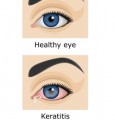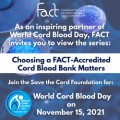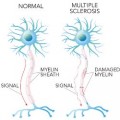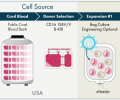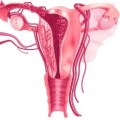You are here
News
2021
Dec 2021 Vladomir suffered oxygen deprivation at birth, and this left him nearly blind. At age 11, Vladomir was treated with cells from both the cord blood and the cord tissue of his baby brother, with the two types of cell therapy spaced six months apart. The cord tissue MSC were injected into his spinal cord and into his eyes. Today, at age 13, Vladomir can see well enough to attend a regular school, ride a bicycle in traffic, and he participates fully in the activities of a normal teenager.
Dec 2021 Keratitis is an inflammation of the cornea that can be treated by surgical application of a wound dressing made from amniotic membrane. This article reports on a study in Ukraine where clinicians that specialize in eye disorders collaborated with a biobank supplying cryopreserved amniotic membrane. Within 3 months after surgery, 96% of patients had fully recovered.
Nov 2021 We have put together a Parent's Guide to the Duke Expanded Access Program. This program offers compassionate access to cord blood cell therapy for children with neurodevelopmental disorders. Many aspects of this program are not clear to parents, and have been misrepresented by critics. The heart of this article is a table listing all of Duke's relevant cord blood clinical trials and their outcomes.
Nov 2021 The Foundation for the Accreditation of Cellular Therapy (FACT) is an inspiring partner of World Cord Blood Day 2021. FACT invites you to view a four-episode series of videos on why choosing a FACT-accredited cord blood bank is important when donating or storing your child’s cord blood stem cells.
Oct 2021 The top family cord blood banks in the United States have slashed their prices, making cord blood storage more affordable for more families.
Oct 2021 Cell therapies are being used to treat Multiple Sclerosis (MS). A new clinical trial tests the cord blood product DUOC-01 as a treatment for primary progressive MS. Meanwhile, autologous stem cell transplants (HSCT) are now a standard of care for some patients with relapsing remitting MS.
Sep 2021 Cord blood banking is especially important for babies conceived with assisted reproductive technologies, such as egg or sperm (gamete) donors.
Sep 2021 Public cord blood banks may become sources of raw material for biotherapies. But first, challenges must be overcome. The immune cells in cord blood are very different from the immune system of an adult, and we must find out if this can be used to advantage. A technical challenge is that residual red blood cells must be thoroughly removed from cryopreserved cord blood before it can be used as a source for T-cell therapies.
Aug 2021 Registration is now open for the AABB 2021 Virtual Annual Meeting, to be held Oct. 17-19. AABB will host this event on a new state-of-the-art virtual platform, with enhanced opportunities for attendees to connect with one another. AABB will offer Spanish sub-titles for the majority of sessions. This year's meeting will feature more sessions on education for early career members and more sessions on biotherapies.
Aug 2021 From 2011 to 2020 there were 112 clinical trials registered worldwide that employed cell therapy to restore fertility. The largest category was 49 trials to regenerate the uterine lining of infertile women. The most popular sources of cells for these trials was birth tissues such as the umbilical cord, placenta, and amnion. Multiple studies reported that infertile women that had failed conventional treatments succeeded in becoming pregnant after cell therapy.


